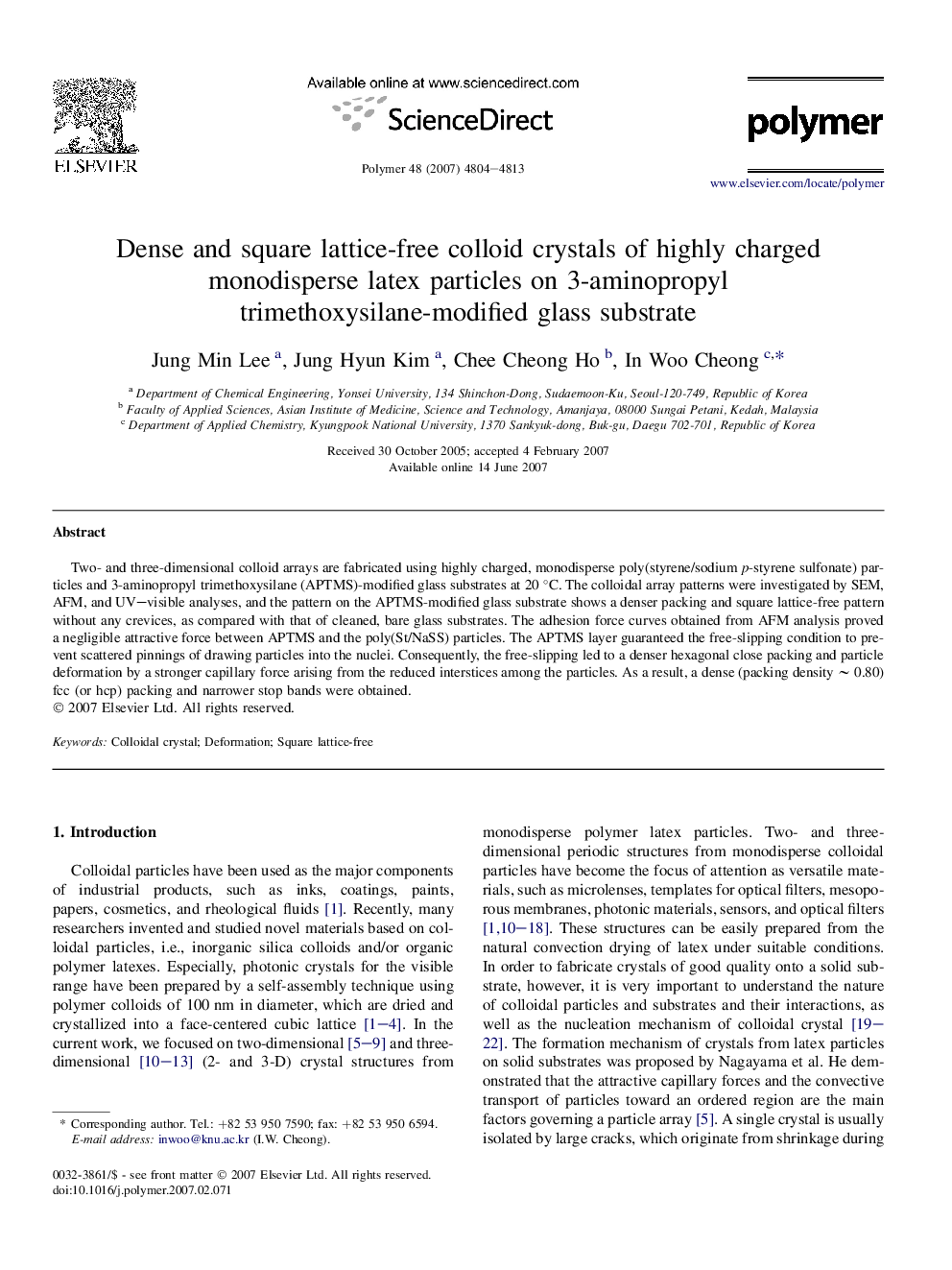| Article ID | Journal | Published Year | Pages | File Type |
|---|---|---|---|---|
| 5185774 | Polymer | 2007 | 10 Pages |
Abstract
Two- and three-dimensional colloid arrays are fabricated using highly charged, monodisperse poly(styrene/sodium p-styrene sulfonate) particles and 3-aminopropyl trimethoxysilane (APTMS)-modified glass substrates at 20 °C. The colloidal array patterns were investigated by SEM, AFM, and UV-visible analyses, and the pattern on the APTMS-modified glass substrate shows a denser packing and square lattice-free pattern without any crevices, as compared with that of cleaned, bare glass substrates. The adhesion force curves obtained from AFM analysis proved a negligible attractive force between APTMS and the poly(St/NaSS) particles. The APTMS layer guaranteed the free-slipping condition to prevent scattered pinnings of drawing particles into the nuclei. Consequently, the free-slipping led to a denser hexagonal close packing and particle deformation by a stronger capillary force arising from the reduced interstices among the particles. As a result, a dense (packing density â¼Â 0.80) fcc (or hcp) packing and narrower stop bands were obtained.
Keywords
Related Topics
Physical Sciences and Engineering
Chemistry
Organic Chemistry
Authors
Jung Min Lee, Jung Hyun Kim, Chee Cheong Ho, In Woo Cheong,
